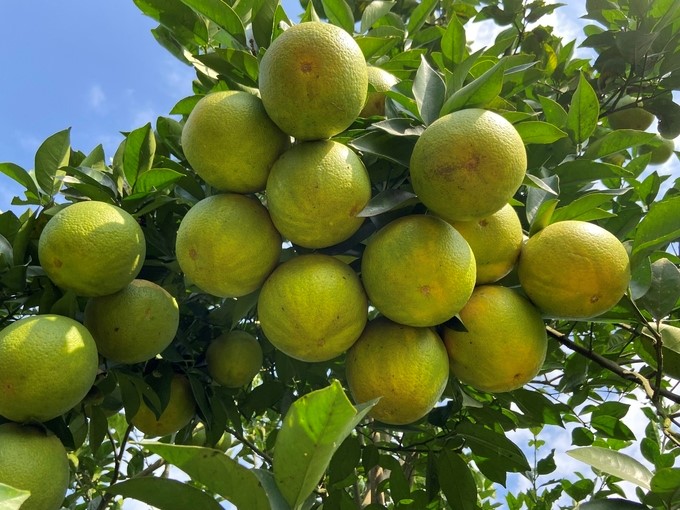November 25, 2025 | 09:12 GMT +7
November 25, 2025 | 09:12 GMT +7
Hotline: 0913.378.918
November 25, 2025 | 09:12 GMT +7
Hotline: 0913.378.918
In the first 10 months of 2024, Australia imported vegetables, fruits, and processed products from over 100 countries and territories. Of which, the main supply sources of vegetables, fruits, and processed products for this country include China, New Zealand, Vietnam, the US, and Belgium.
According to the International Trade Center (ITC), Australia's import turnover of vegetables, fruits, and processed products from China in the first 10 months of 2024 reached USD 318.35 million, increasing by 24.3% over the same period last year and accounting for 15.18% market share of total turnover.

Vietnamese and Australian functional agencies are negotiating on exporting Vietnamese grapefruit to Australia.
Next is New Zealand. Australia's imports of vegetables, fruits, and processed products from this market in the 10 months of 2024 reached USD 248.11 million, up 16.4% over the same period last year and accounting for 11.83% of total turnover.
Vietnam is the third-largest supply source of vegetables, fruits, and processed products for Australia in the first 10 months of 2024, reaching USD 109.68 million, an increase of 35.4% over the same period last year. Vietnam's market share of vegetables, fruits, and processed products in Australia's total imports increased from 4.45% in the first 10 months of 2023 to 5.23% in the first 10 months of 2024. From the above analysis data, it can be seen that Vietnamese fruits and vegetables are increasingly favored in the Australian market.
Currently, Australia only allows the import of five types of fresh fruit from Vietnam, including mango, longan, lychee, dragon fruit, and passion fruit.
According to the Agency of Foreign Trade (Ministry of Industry and Trade), the functional agencies of Vietnam and Australia are negotiating on exporting Vietnamese grapefruit to the Australian market. Therefore, Vietnam still has a lot of potential to export fruits and vegetables to Australia in the coming time.
Australia is a market with technical barriers and very strict requirements on labels and food safety and hygiene. Some standards are even higher than the US and EU. Therefore, to effectively exploit the Australian fruit market, Vietnam needs to strengthen quality control of growing areas and complete the system of registering and evaluating the issuance of growing area codes and packaging, pre-processing, and processing facility codes. At the same time, continue negotiations to open the market for agricultural products in general and fruit in particular exported to Australia.
The Vietnam Trade Office in Australia will continue to support Vietnamese companies and businesses in finding information about the market, trade, and investment situation and assessing the potential and investment and business environment in Australia for fruit and vegetable items.
In addition, Australia's new guidelines, policies, and regulations on imported agricultural products will also be updated. At the same time, guide and recommend businesses solutions to access the market as well as notes for businesses to prevent commercial fraud when doing business in Australia.
Translated by Thu Huyen

(VAN) An Giang promotes supply-demand connections, standardizes quality and builds value chains, creating a foundation for sustainable bird’s nest development and aiming to expand exports.
/2025/11/24/5339-4-nongnghiep-075331.jpg)
(VAN) Recently, the conference on 'Sustainable Fisheries Linkage Chain - Tilapia for Export' took place in Tien Hai commune, Hung Yen province.
/2025/11/21/4309-2-153400_128.jpg)
(VAN) Green and low-emission rice is paving the way for Vietnamese rice to enter high-end markets, marking the beginning of a transformation journey toward greening and elevating the national rice brand.

(VAN) ‘Right to Win’ outlines a national action plan that shapes a new vision for Viet Nam’s agriculture in an era of renewal and global integration.

(VAN) Lam Dong’s farmed sturgeon output this year is expected to reach 2,300 tons, worth VND 450 billion, affirming the brand’s position on the market.

(VAN) A surge in Ukrainian egg exports, largely driven by soaring sales to the UK over the last few years, has notably pushed up egg prices on the domestic market.

(VAN) The price of Arabica Catimor coffee in Quang Tri is currently at VND 25,000–27,000/kg (fresh cherries), the highest level ever recorded